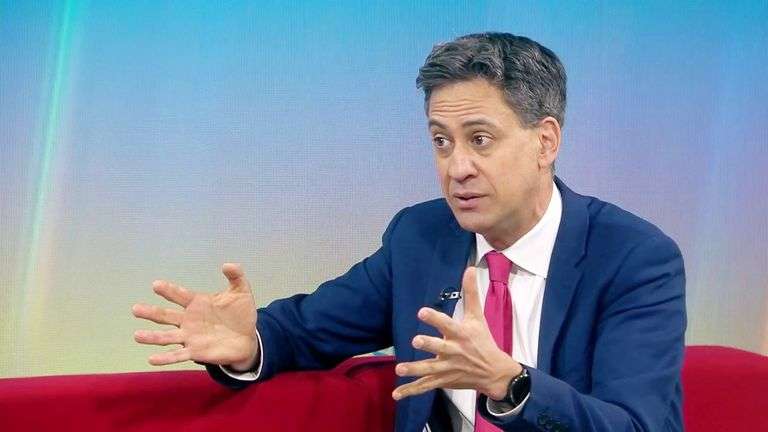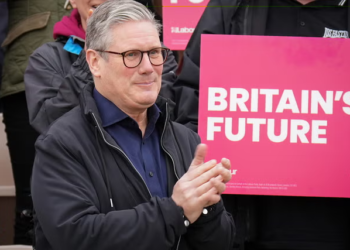Keir Starmer is under pressure to significantly increase Labour’s financial commitment to publicly owned renewable energy, aiming to deliver substantial consumer savings.
This comes in the wake of the party’s recent decision to significantly reduce its green investment plans.
Despite the controversial U-turn on the £28 billion green investment pledge, the Common Wealth think tank is advocating for a substantial boost in government support for clean energy generation.
The Common Wealth think tank deems the remaining investment as a critical “down payment” following the abandonment of the original £28 billion commitment, particularly in Great British Energy—a state-owned renewable power generation company proposed by Labour if elected.
However, it recommends a substantial increase to £30 billion over the initial term in office to ensure a more impactful transition to cleaner energy.
Concerns have been on the rise regarding Labour’s ability to meet its goal of decarbonizing the UK’s electricity system by 2030, particularly in light of the party’s decision to halve the funding package for its green economy plans.

Common Wealth, a key thinktank that influenced Ed Miliband, the Shadow Net Zero Secretary, was the first to propose a new publicly owned energy generator.
This proposal, which aimed to create a generator similar to those found in European countries such as Sweden (Vattenfall), Denmark (Ørsted), and Norway (Equinor), provided support for GB Energy.
Ed Miliband, who holds a key position in shaping Labour’s environmental policies, reportedly resisted the reduction of Labour’s £28 billion investment plan.
Speculation, albeit denied by his team, suggested that he might consider resigning over the matter. However, in a display of solidarity, Miliband contributed a statement to the press release confirming the scaled-back nature of the investment plan.
Labour has said, that a “homegrown, publicly owned champion in clean energy generation” would enable the creation of jobs and manufacturing in Britain’s renewables sector.
However, several details still need to be clarified, including whether it would operate green assets directly or control a portfolio of investments in other companies instead.
Labour stated last week that GB Energy would “partner with industry” and “co-invest” in groundbreaking green technologies.
The party has also indicated its support for capital-intensive ventures like the Sizewell C nuclear power plant in Suffolk through “backing and building.”
The government is looking to raise £20 billion from outside investors for the GB Energy project. This is significantly more investment than Labour is currently planning.
The government removed the Chinese state-owned group CGN from the project in 2022 due to security concerns.
Renewables Cost Saving
In a report setting out the case for a vast expansion of GB Energy in the early years of a Labour government, Common Wealth said state-led investment in clean energy would be substantially cheaper than the private sector equivalent – helping to save households money on their bills.
Renewable investment funded by Labour’s initial £8.3 billion capitalization would annually save between £125 million and £208 million on debt interest costs, totaling up to £1 billion compared to borrowing from the private sector, which tends to be more expensive.
The report’s analysis, based on International Energy Agency estimates, suggests that a 2 percentage point increase in borrowing costs could result in a 20% rise in the “levelized cost of electricity” for solar or wind projects.
This measure indicates the average cost of generating each unit of electricity throughout the asset’s lifespan.
According to Common Wealth, this serves as a reliable indicator of the potential savings between government-backed investment and private-sector borrowing, with the savings potentially translating into lower energy bills for households.
Mathew Lawrence, the director of Common Wealth, expressed support for Keir Starmer’s renewed dedication to GB Energy, Labour’s proposed new public renewables company.
However, Lawrence emphasized that the ambition of this initiative will ultimately be determined by its design and scale.
READ ALSO: UK Government Pursuing Nuclear Plant Sites Amidst Wylfa Negotiation Reports





















